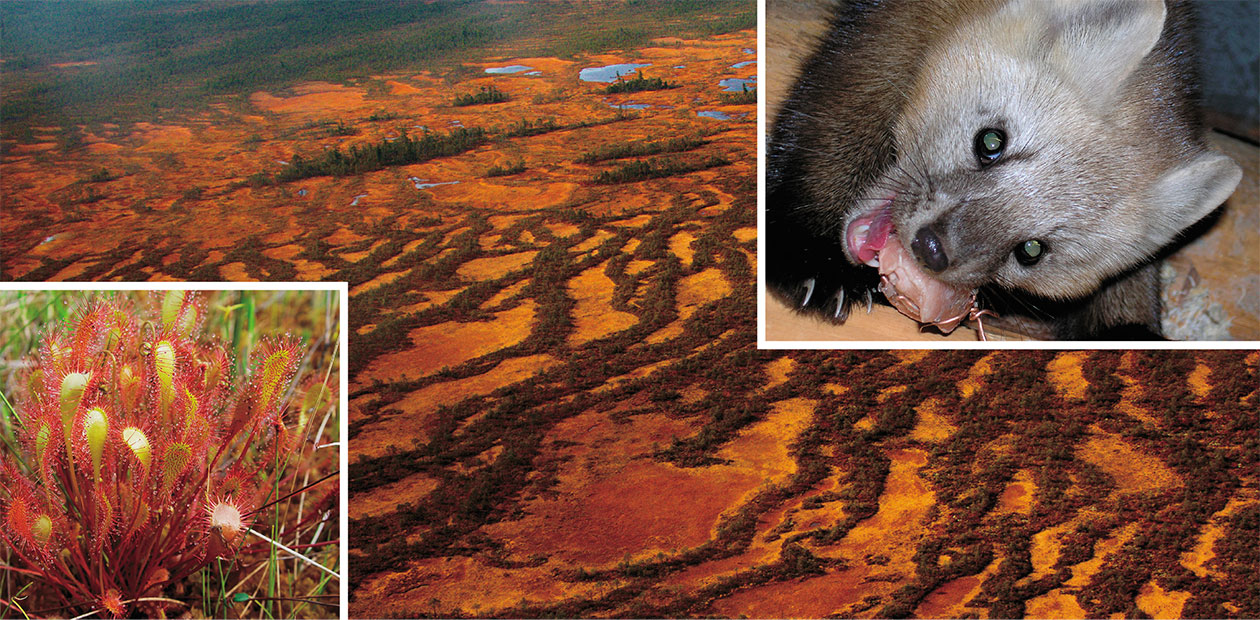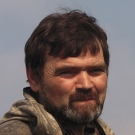Yuganskiy Nature Reserve: a home for the Russian sable
May of 2022 marked the 40th anniversary of the Yuganskiy Nature Reserve, situated in the Middle Ob lowlands between two major Siberian rivers – the Ob and the Irtysh. Reaching these protected areas can be a significant challenge on its own – 210 km (130 miles) of highway linking Surgut with the village of Ugut, where the nature reserve headquarters are situated, and tens of kilometers off-road, where the only transport is motorboats or snowmachines, depending on the season. These remote lands, away from oil fields, is where typical taiga landscapes have have retained their original form and have become home to various animals which are an integral part of the primeval Siberian woods
Territory-wise, the State nature reserve “Yuganskiy” belongs to the Khanty-Mansi Autonomous Okrug (Yugra), the largest oil producing region not just in Russia, but in the whole world. In our country, the region is a leading industrial producer, with over 80 % of its product comprised by the oil and gas industry (today, over a half of all Russian oil is produced here), also meaning that it is the largest contributor of taxes into the state budget.
Beginning from the mid‑1960’s, over 400 deposits of carbohydrates were discovered in the region, including the Surgut district. The intensive development of the oil and gas industry has drastic anthropogenic effect on the environment. Under such circumstances, the role of protected natural territories in the conservation of the environment in its primeval form becomes critically important.
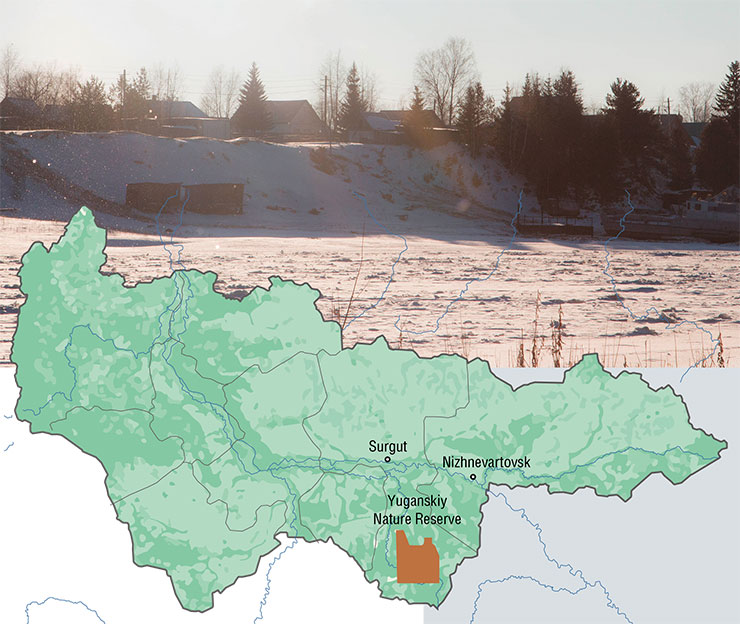
The headquarters of the nature reserve (administrative and utility buildings and houses of workers) are situated about 1.5 km (1 mile) away from the village of Ugut, in Scots pine forest on a tall bank of the river Ugutka, a right tributary of the Bolshoi Yugan
In this sense, the founding of the Yuganskiy nature reserve in 1982 was a remarkably important and timely event, since at the time, the area was only barely touched by geological surveying in the late 1970’s.
The Yuganskiy nature reserve occupies a vast territory of over 648 thousand hectares between the Bolshoi Yugan and its tributary, the Malyy Yugan. There are no roads leading to the reserve, and none in the reserve itself. Roadless areas stretch for tens and hundreds of miles; they are a significant obstacle for the nature reserve workers on their way to field work locations or to battle forest fires.
In the Soviet times, the nature reserve received significant funding to rent aircraft: at least once a week, an Antonov An‑2 biplane or a Mil Mi‑8 helicopter flew there. Hence, all locations in the nature reserve were readily accessible, with the possibility to deliver cargo or construction materials, patrol the territory or survey large mammal or waterfowl populations.
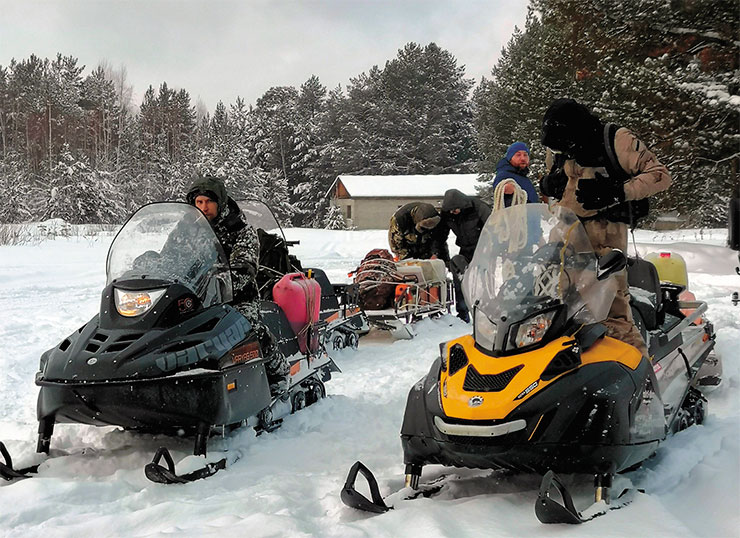
After the collapse of the USSR, funding decreased manifold, and helicopters became a rare sight over the nature reserve. Nowadays, only snowmachines and boats are used, depending on the season, as well as the workers’ feet, year round. Long, difficult journeys are brightened by the beautiful views of pristine nature, virtually untouched by humans.
Across forests, rivers, and mires
The territory of the nature reserve is relatively flat – even its highest points, at 80–90 meters above sea level, are only slightly elevated above the surrounding terrain. This is why the protected area is characterized by highly bogged watershed divides between narrow valleys of slow-flowing rivers.
The drainage network of the nature reserve is represented by tributaries of the Bolshoy Yugan: the Nyogus-Yakh, which flows from the southern part of the territory towards its northwest corner, the Malyi Yugan, flowing along the eastern border, and its tributary, the Vuyayany, a smaller river impassable to boats. These larger rivers are fed by a massive network of dozens of smaller rivers and creeks covering the whole territory of the reserve.
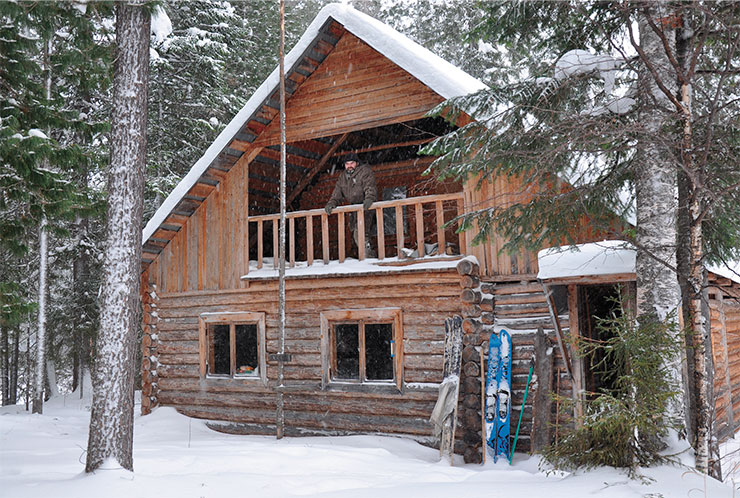
The Yuganskiy nature reserve is the standard of typical West Siberian middle taiga, which forms in excessively humid environment and sharply continental climate with an extended cold period. Two thirds of its territory are covered by forests. Vast forests are broken by massive raised bogs with numerous lakes and lakelets, which serve as watershed divides.
A characteristic feature of these forests is the relatively low proportion of regrowth (less than 2 %), with prevalent mature and overmature forests. As the result, some habitats are crammed with fallen dead trees, forming tangled barriers up to several feet high and several hundred feet wide!
Most of the current territory of the nature reserve went through massive forest fires in the XIX century; such fires are still a common occurrence. Modern-day forest communities in the nature reserve are a product of post-fire secondary successions, which are logical sequences of changes in the composition of natural communities after exposure to damaging natural or anthropogenic factors. In a-fire communities, deciduous sunlight-loving species are usually the first to regenerate, followed by the so-called “light conifers” (a term of the Russian forest science, which includes larch and Scots pine, a two-needle pine) and later by “dark conifers” (spruce, fir, and Siberian pine, a five-needle pine).
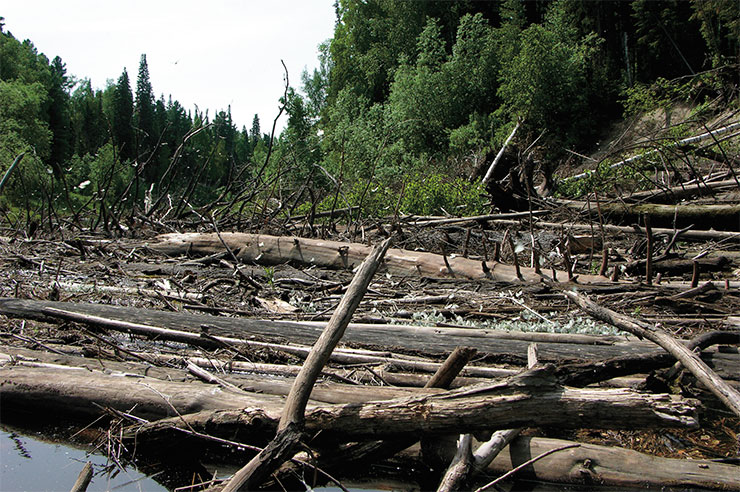
Nowadays, forests of the nature reserve are mostly comprised of various communities dominated by Scots pine (Pinus sylvestris), however, forests with deciduous species of trees are also widely distributed. The Siberian pine (Pinus sibirica) is abundant, mostly as part of mixed forests, but larch (Larix sibirica), which prefers well-drained soils and requires open, windy locations to regenerate, is rare.
A look at the vegetation map of the reserve, where each dominant tree species is assigned a separate color, will show that basins of different rivers are differently colored. The basin of the Nyogus-Yakh is mottled: aspen and birch stands are mixed with Siberian pine, spruce, and fir. The Vuyayany is more uniform: the Scots pine dominates, and dark conifers are present as narrow strands along rivers; aspen stands are more common along edges of raised bogs.
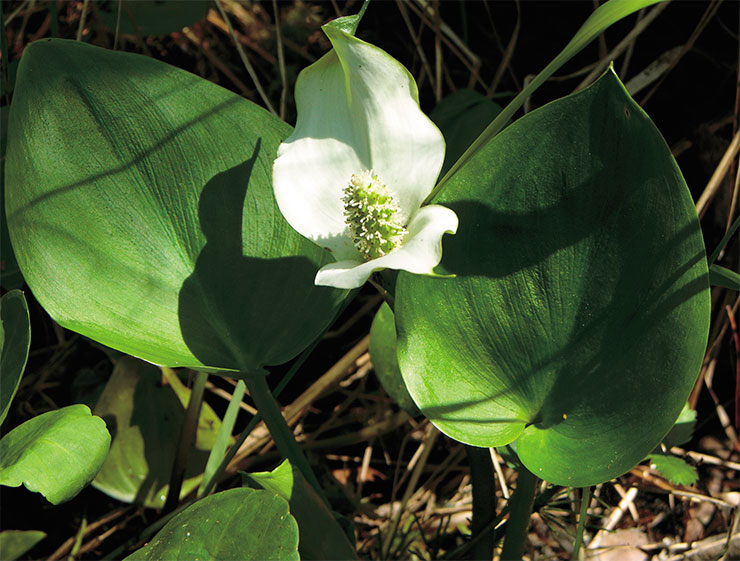
Unlike the upper levels of the forest, the herbaceous layer has a more constant composition. The shrub layer is dominated by honeysuckle (Lonicera edulis), wild rose (Rosa spp.), and mountain ash (Sorbus sibirica). Vast territorries, especially in coniferous forests, are covered with dwarf berry shrubs, especially bilberry (Vaccinium myrtillus) and lingonberry (V. vitis-idaea) and occasionally stone bramble (Rubus saxatilis), among others. Everywhere there are verious mosses, and in the so-called “belomoshniks”, which are Scots pine forests on dry, poor sandy soils, the soil is covered with lichens.
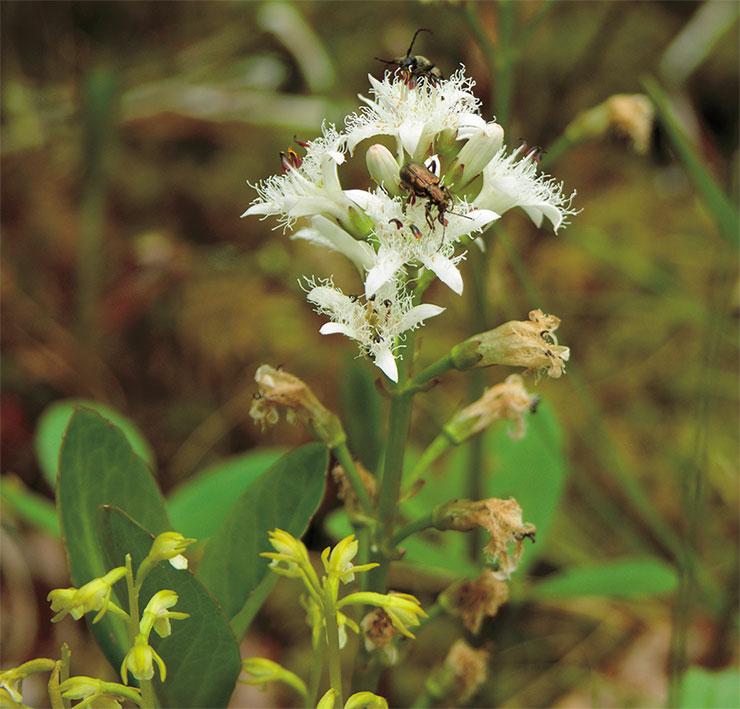
About a third of the territory is covered by mires, which are a part of the Great Vasyugan Mire – the largest wetland system on the planet. They are situated on flat, poorly drained watershed divides and along edges of wide river terraces. It is often dificult to draw the line between forests and mires, due to a variety of transitional communities, such as swamps and bogged peatland forests.
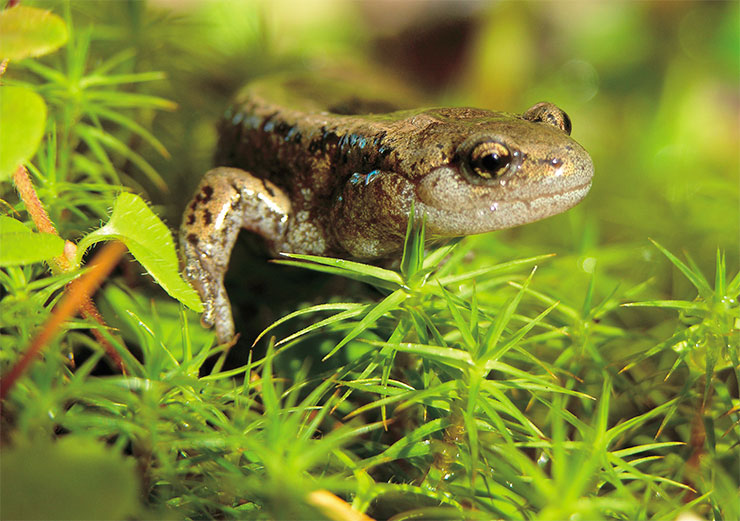
The prevailing type of mires in the nature reserve is raised bogs, which are a type of peatland, including the so-called ryams – bogged pine forests made up of a peculiar dwarf form of the Scots pine, with century-old trees often just a few feet tall. Raised bogs along watershed divides are especially massive and often stretch for tens of miles.
The average thickness of peat in these bogs is around 2–4 meters (6–13 feet) and can reach 10 meters (33 feet). Core regions of raised bogs are usually occupied by the so-called ridge-hollow or ridge-hollow-lakelet complexes, with a striped pattern of wet Sphagnum hollows and lakelets and low ridges covered with dwarf shrubs and dwarf Scots pines no more than 7–11 feet tall.
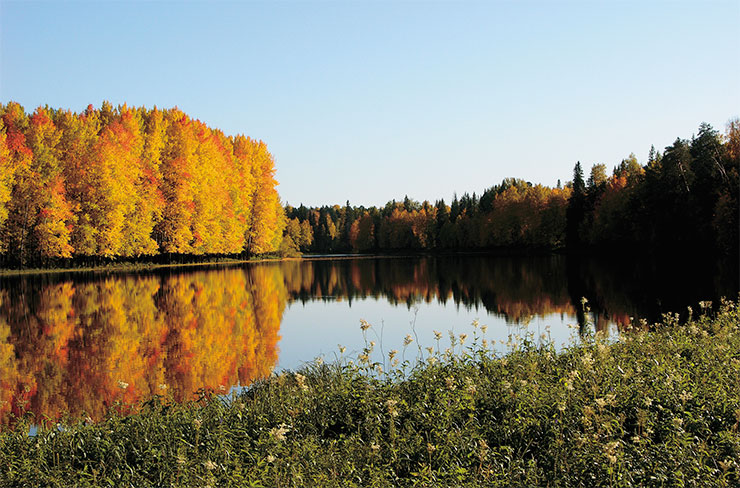
In mires, soils are covered by Sphagnum mosses and their trustworthy companions – dwarf shrubs from the heather family: marsh Labrador tea, blueberies, cranberries, bog rosemary, leatherleaf, etc. Sundews and cloudberries are also common. Some mires boast high diversity of flora, with many vascular plants, including orchids.
Teeth, hooves, and wings
The abundant fauna is one of the main assets of the nature reserve. Mammals and birds are especially noteworthy and include a number of rare species.
The range of mammal sizes in the nature reserve is immense – from tiny insectivorous shrews weighing just a couple grams to the giant moose weighing several hundred kilograms (or up to over a thousand pounds). Yet, smaller mammals constitute over a half of all mammalian diversity of the territory, such as microtines which include small rodents (predominantly voles) and small insectivores. Among the rodents, the red squirrel and the Siberian chipmunk are common; the mountain hare is the main representative of the lagomorphs, however, its population numbers are currently not high.
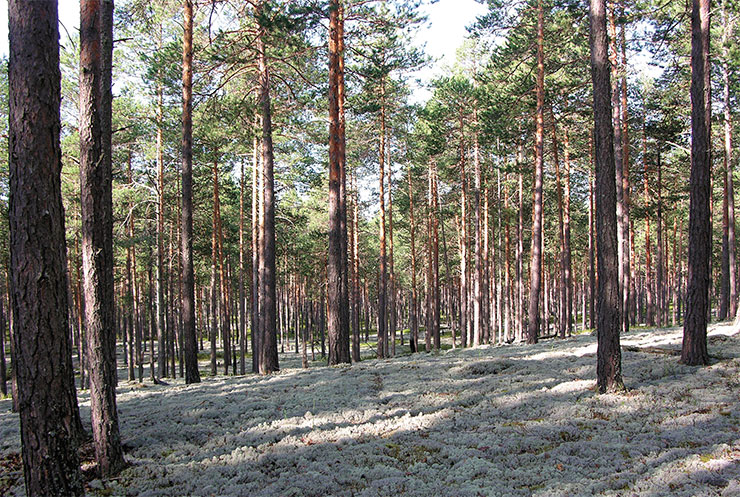
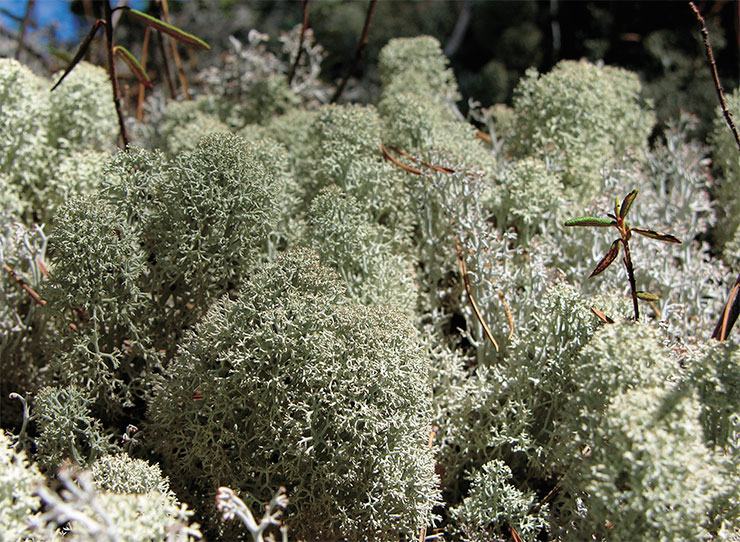
Microtines are the staple for many predators, with the sable being the most numerous. The type subspecies inhabiting the nature reserve is known as the Tobol sable (Martes zibellina zibellina), which differs from other subspecies with its large size and pale, puffy fur. The lynx, a big cat, is a rare vagrant. Unlike the lynx, the brown bear is ubiquitous, although it apparently prefers floodplain forests, which offer the best feeding opportunities.
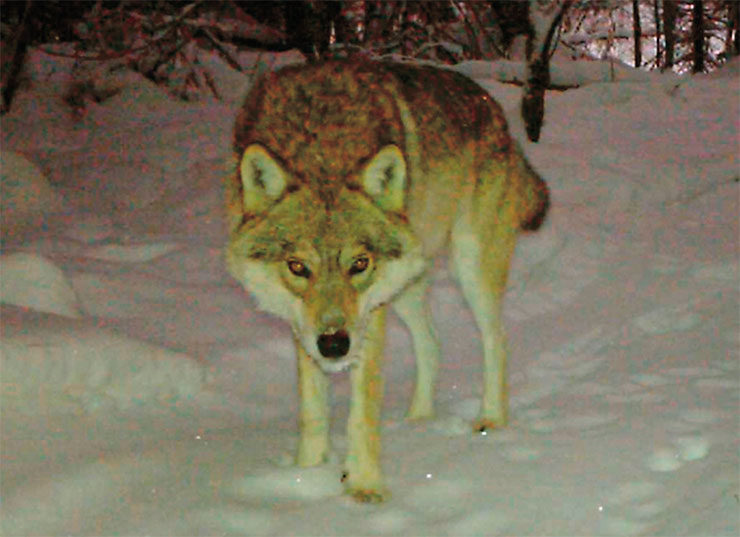
The American mink (Neovison vison) and Eurasian otter (Lutra lutra) are common along rivers, while the wolverine (Gulo gulo), least weasel (Mustela nivalis) and short-tailed weasel (Mustela erminea) are rare. Red foxes (Vulpes vulpes) are few, and the numbers of the wold (Canis lupus) are rising: these predators penetrate the depths of taiga woodland along roads, pipelines and oil lines built by the oil and gas companies around the nature reserve. Currently, three resident packs have been registered, with 5–7 individuals in each pack. Their key prey are ungulates, and reindeer (Rangifer tarandus) in particular.
The reindeer inhabiting the nature reserve belong to the relatively rare forest subspecies which has been listed in the Regional Red List for over a decade. In the late 1990’s and early 2000’s, this species was near extinction in the region. However, conservation measures were effective and the population rebounded. The Yuganskiy nature reserve played an important role in the process.
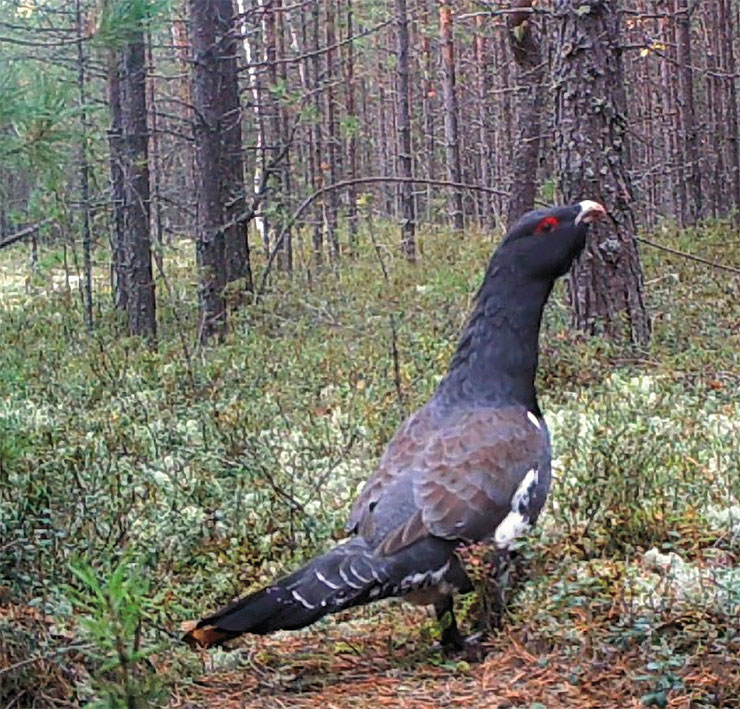
In our area, the reindeer prefers Scots pine forests and raised bogs, at least in winter, when it forms herds of up to 20 animals, making it easier to survive the harsh winter. After the snow melts, herds dissipate, and reindeer become solitary or stay in small groups of up to 5 animals.
Some of the birds inhabiting the nature reserve are lister in regional and federal Red Lists, including the white-tailed eagle, osprey, and golden eagle. The first two species are encountered with some regularity, however, meeting the latter is great luck. The black stork is even more rare – it is a very cautious and elusive bird included in the federal Red List of Russia and several adjacent countries.
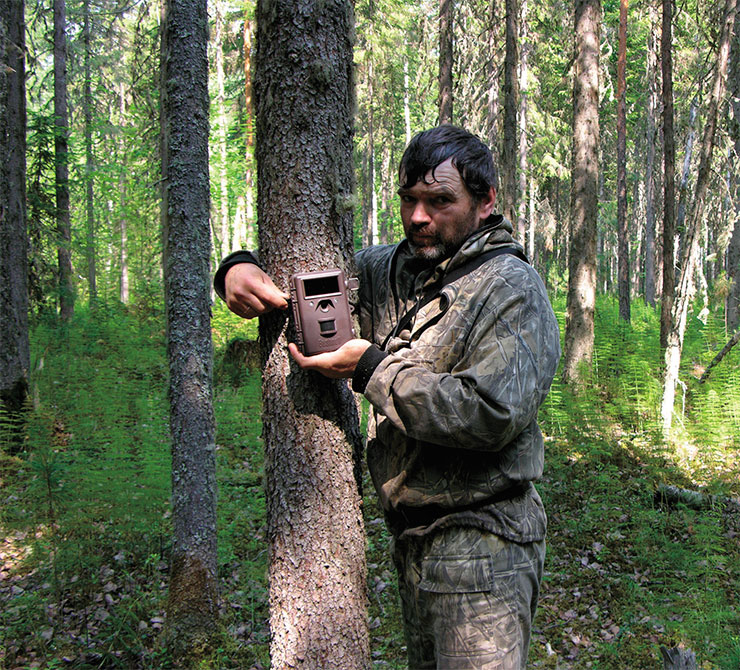
Species of waterfowl are abundant during certain seasons, including the whooper swan and bean goose. Forested areas are home to several grouse species year round: the capercaillie, the hazel grouse, the black grouse, and the ptarmigan. Various corvids are always heard and seen, including the nutcracker, which specializes on Siberian pine nuts, and the Siberian jay.
Other noteworthy vertebrates include reptiles – the common viper and the viviparous lizard, the Siberian salamander, and two bat species – the Northern bat and the parti-colored bat.
Along game trails
Each field zoologist studying the ecology of mammals must know how to read animal sign and tracks. Being able to read who went where and when is instrumental in gathering material for research.
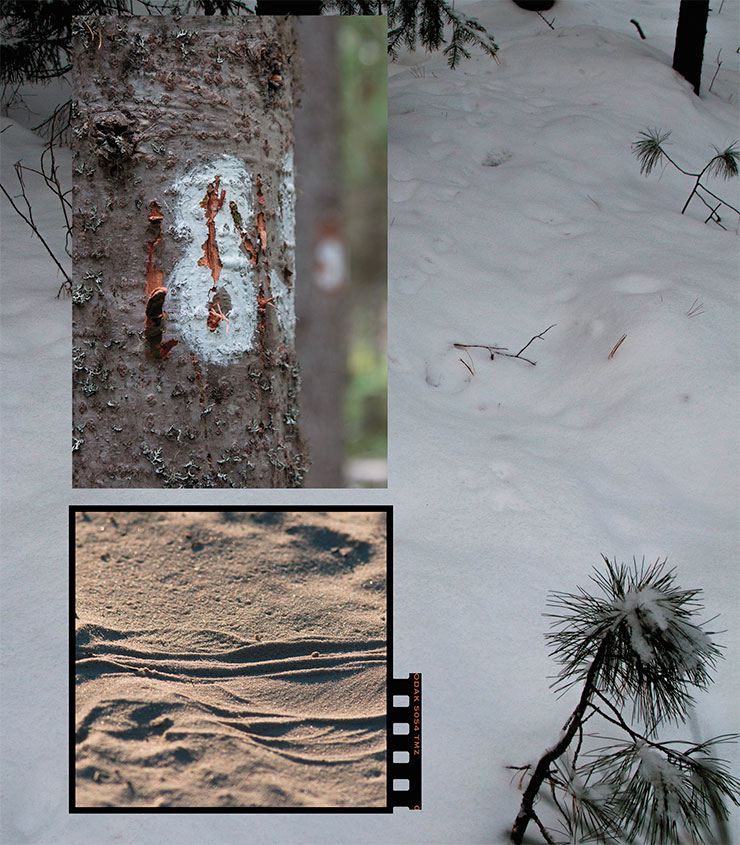
The snow cover in the nature reserve persists for six months, which helps in searching for and “decoding” tracks, but there are nuances. As a rule, as the snow gets deeper, tracks turn from clear paw prints into shapeless pits with collapsed walls. In this case, it is necessary to know the typical size and configuration of tracks, the arrangement of feet as the animal moves, depending on its speed and gait, and to be able to spot other types of animal sign, such as hair or feces.
Even during the winter, the work of a field biologist tracking animals is not easy. It gets far more challenging during the snowless period. In the summer, when the ground is completely covered with mosses, lichens and shrubs, finding identifiable tracks is very difficult. As a rule, one can find tracks in clayey mud along shores or on freshly dug soil. To find out who is using game trails, we used to set up special track traps on trails, by digging up soil and clearing it from plant debris.
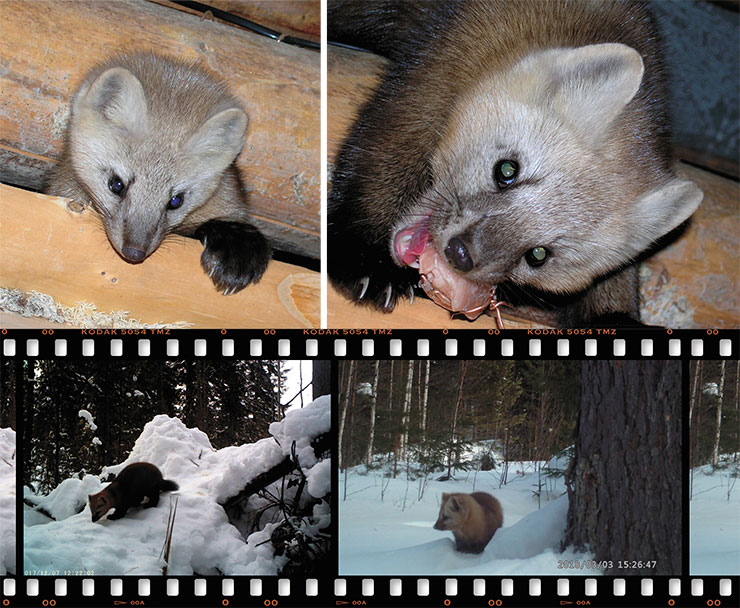
Today, trail cameras come in handy in tracking animal movements. Setting these devices is akin to hunting, but the trophy is not the harvested animal, but its pictures and data that can be saved in databases, analyzed, used for illustrations and in research, etc.
In the Yuganskiy nature reserve, the use of trail cameras was initiated about 7–8 years ago by its current director, Eugene Strelnikov. Some of these cameras work year-round, producing lots of interesting and useful information about the ecology of certain mammal species.
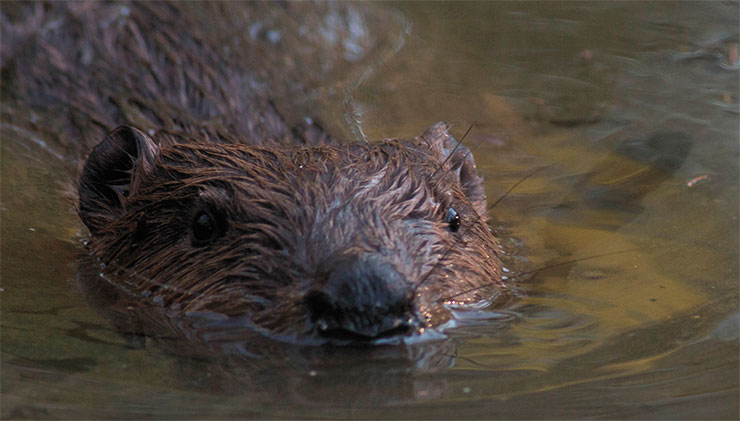
There are several key principles of installing trail cameras: near dens or nests, near bait, and in busy spots along game trails. For instance, there are places in the woods where trails of various mammal species intersect. Oftentimes, such spots have scent posts, which animals belonging to different species mark with their urine, feces and scent glands, as well as by rubbing against tree trunks.
The best results are achieved when cameras are installed on game trails in natural bottlenecks, such as narrow spots of river valleys, merging wooded ridges from different sides of open mires, etc. One of such jackpot spots in the nature reserve is a narrow neck of a loop of the meandering Nyogus-Yakh, where trail cameras have been installed for a few years.
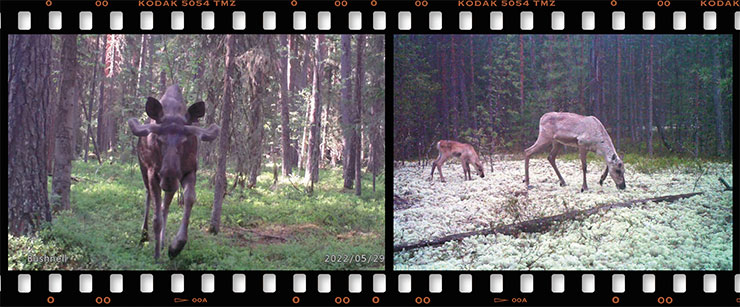
Trail cameras require regular maintenance (change of batteries and memory cards), but the biggest problem is to reach the places where they are installed.
TAIGA NEIGHBORS The life of a wild mammal is very different from that of a domestic one, which is fed and protected by humans. A sable has no problem with stuffing its stomach full when food is abundant, especially in the summer and fall. In winter, situation changes radically. Digging through deep snow to reach the vole it has tracked will often take too long, and the vole will have time to flee to safety. If the preceding summer had low vole numbers, the predator will starve in the winter.Hungry beasts lose their fear of humans and come close to human dwelling; they raid landfills and dumpsters, enter houses and sheds, leaving terrible mess behind them. Sometimes, however, even well-fed sable are guilty of such behavior, attracted by smells of exotic foods.
One such pesky sable, a female, has been living near the Vuyayany field research station for several years. The cabin is built without a foundation, and the sable has two ways to get inside: dig under the wall and chew through floorboards, or chew through the ceiling. This individual has mastered both methods. When she breaks into the cabin in the summer, while humans are absent, she tears apart everything she reaches: toilet paper, bags of cereal, magazines and books. Having made a mess, she retreats.
During winter surveys, the brazen beast turns starts terrorizing us on the first night. She can easily steal a loaf of bread from the porch, which weighs as much as she does. The only way to save our food is to hide it in a metal container or put it into the labaz (a raised shed on four tall poles). She sneaks in through the hole she has chewed through the floor near the stove, and steals everything that even remotely smells of food. One night, I closed the hole with a piece of plywood, and put an empty metal bucket on top of it. I woke up in the middle of the night from a loud clanging sound: the sable tried to head-butt her way through the obstacle – all I saw was her glaring eyes, reflecting the beam from my flashlight. She was not bothered by the flashlight – she kept trying to break into the cabin until I threw my trapper hat at her, which was the only thing that I had at hand near my sleeping bag.
The next day, I went on a long skiing route, after removing all edibles to a safe place. I was approaching the cabin and saw the sable standing on the window sill inside. While I was untying my ski bindings, the sable disappeared. Evertything was intact inside, minus a stick of salami and four boiled ggs which I had left on the table after breakfast. The sable ate the eggs with the shells.
Before going to sleep, I tied some chicken skin and bones with a piece of wire to a nail outside, on the deck. Around midnight, I walked out, after hearing a noise outside, and saw the thief in action. Neither my powerful flashlight nor my presence bothered here. She managed to rip out the tasty treat and disappeared, with promises of return, which she kept doing throughout my ten day stay at the station
With trail cameras, the volume and quality of field observations collected for research increased drastically. Contrary to the common belief, the nature reserve is not teeming with wildlife, and staff workers do not actually encounter many animals “in person”. One can rarely see a large animal from closer than 50 meters (160 feet). Usually, larger animals hear our movement from afar and avoid direct contact, by quietly moving away. However, they are not too bothered by trail cameras and get used to them, without paying any further attention to these devices once they have been installed.
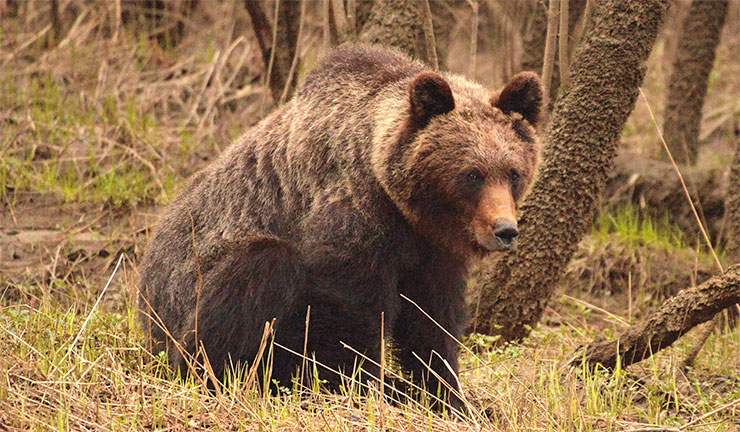
Sometimes, however, they can be destructive. While damage caused by squirrels is mostly limited to chewing the case or ripping out the rubber plugs, bears can easily crush a camera with their powerful bite. In this case, the last recorded image shows their gaping mouth with giant fangs. Moose and reindeer are often curious about the cameras, too – their breath temporarily fogs the lenses.
The main thing is that trail cameras are indispensable in spotting rare and obscure mammals. For instance, this was how we confirmed the presence of lynx in the nature reserve. The wolverine is another animal rarely encountered along track survey routes, and it is difficult to evaluate the size and physical condition of the individual animal based on tracks. Trail cameras help here, too.
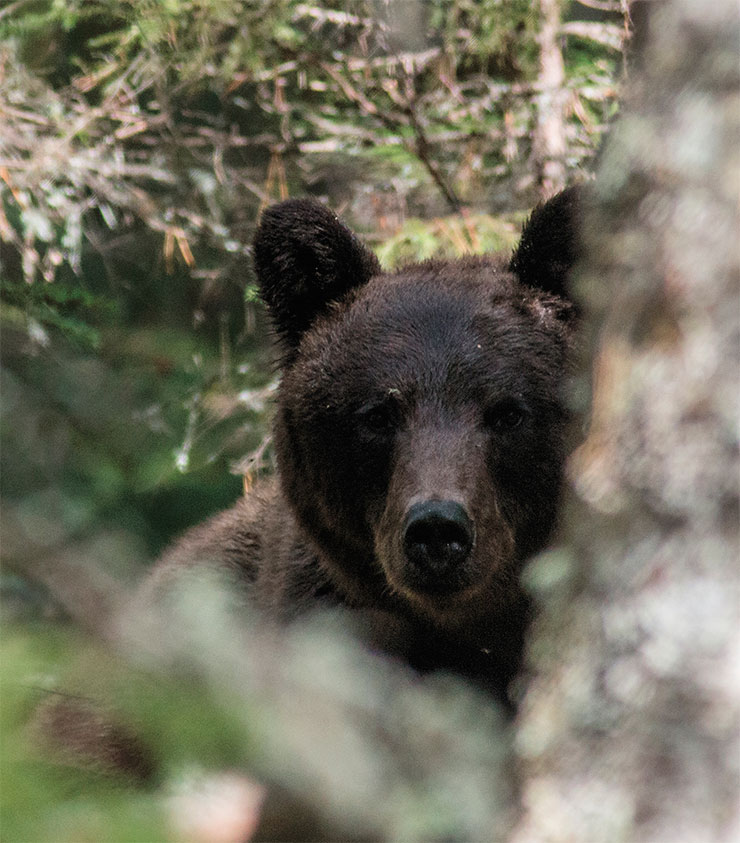
There was never anything funny in my interactions with bears, but there were plenty of scary and interesting things. The bear might look like a good-natured slob, but it is a large, dangerous and innately intelligent predator. At the age of four, this beast fully matures and can easily chase down and kill prey much larger than itself.
One day we were working at the Vuyayany research station. I was moving upstream in my rowboat, perusing animal tracks on the banks. A chain of large pits with clumps of mud scattered around them caught my attention. Inspecting them closely revealed the following scenario: a large bear, ignoring the lush early summer vegetation, craved meat, and targeted a pair of moose. The size of a bear can be approximately defined by its front foot print: larger animals have wider tracks. This particular individual had a 16 centimeter (6.3 inch) wide front foot, meaning it was a large predator, heavier than 200 kilograms (440 pounds).
It is unclear whether the bear ran out of luck while stalking the moose, or the encounter was unexpected for both parties, but the moose were able to flee. For some reason, they did not swim across the river and galloped in giant leaps along the bank. We were able to trace the tracks of the whole group for 200 meters. The behavior of the bear indicated the animal to be a resident, with a good knowledge of its territory: not only did the bear follow the moose, it cut across the meandering river loops, trying to minimize the distance to the potential prey. We do not know the outcome of this hunt: the moose crashed through bird cherry thickets and vanished in the forest, where we lost their tracks.
…in the 35 years of my work in the Yuganskiy nature reserve, I have had multiple encounters with bears. Most individuals behaved adequately and fled upon facing humans. However, different situations can happen.
On a route through taiga, where the visibility is limited to 25–30 meters, one should not try to be too silent, not to walk in on a resting or feeding bear, which can attack you out of fear. If it hears you well beforehand, it will have time to disappear silently into the woods or warn you of its presence by growling, snorting, etc. In this case, do not test your luck and back off, without screaming and panic. The forest is big and there is enough space for everyone.
I had to back off out of a bear encounter once. On a windy August day my son and I ran into a bear digging up an anthill. He heard our steps when we were about thirty meters away, lowered his head, bristled up and started walking at us briskly, swaying his head.
We were armed only with a small axe and a knife. I put my son by my side, to make our outline bigger – for wild animals, the one who is bigger is always right. The bear slowed down, but kept moving towards us. We began to back off slowly, and I started clanging the knife against the axe. The bear did not like the sharp metallic sounds and our confident behavior. He stopped about fifteen meters away from us, standing sideways, gave us a mean glare and jumped sideways. The giant beast disappeared absolutely noiselessly in thick young pine brush.
I have been carrying a pair of flares lasting at least a minute ever since. They provide enough distraction to be able to distance from the approaching predator and part ways peacefully. This works with normal bears. However, with “abnormal” bears, and such animals are occasionally encountered, screaming, flares, or shooting in the air will not work – only shooting them dead will.
Another episode happened in the southern part of the reserve, near a ranger cabin on the river Entl’pun’igl, where a group of invited researchers, mostly women, were working. That area is known for its unpleasantly brazen bears: they will tilt labazes (elevated sheds) with food, damage roofs, or wreak havoc in cabins by entering through the door and leaving through a window. That time, a young bear didn’t like that people had left marks on trees and installed poles marking the borders of the study plot. He approached a research worker who was sitting and taking notes on a log quietly and started breaking the poles right in front of her. The woman made a major mistake by screaming and trying to run away. Such behavior signals fear and inferiority to any predator. The bear started chasing her, making huge leaps, but fortunately, the noise attracted the attention of the rest of the team, who were able to scare the bear away by screaming and banging on a sheet of metal with an axe
Viewing even two months worth of records from a correctly placed trail camera can radically change one’s assumptions about the presence of specific species in the studied territory. Sometimes, there is very little evidence of activity of certain species along survey routes, producing the impression of scarcity of the local fauna. Trail cameras may show a radically different picture, with tons of animal activity around the clock.
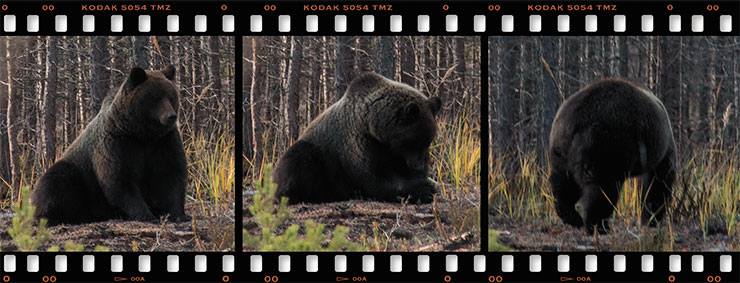
In conclusion, we will provide a record that appeared on the website of the Yuganskiy nature reserve this May:
“On May 31, 1982, the order #324 signed by the Committee of Ministers of the RSFSR marked the creation of the Yuganskiy nature reserve. In the past forty years, our country has gone, and keeps going through a plethora of crises. The state that created the nature reserve no longer exists. However, the plot of land, with its 648 636 hectares of land, still exists and continues to perform its original functions.
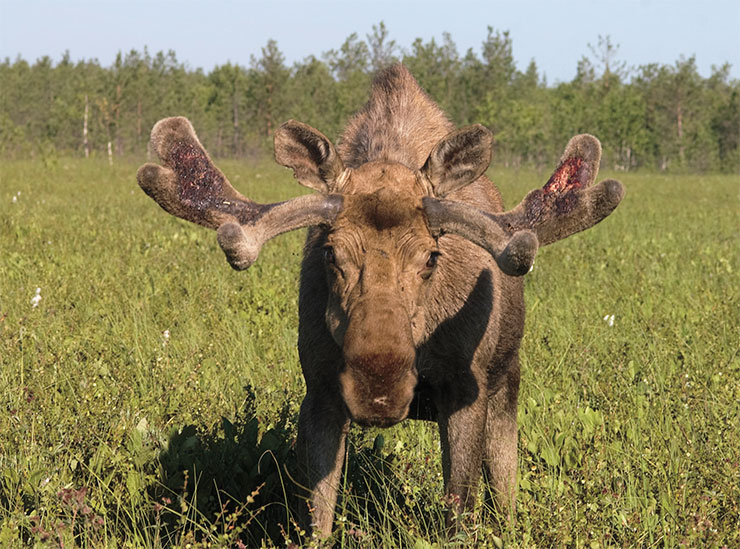
It is the territory that has a birthday today. It is thriving. Everything that is supposed to change, changes: one type of forest replaces another, bogs are expanding where they should, and forest is reclaiming bogged land where it needs to. Strips of forest cut for seismic surveying have almost disappeared in regrowth, and so have the old Khanty reindeer sled trails. The rivers keep meandering, population numbers of flora and fauna keep changing, too. Nothing is forever in nature, and the nature reserve shows it vividly.
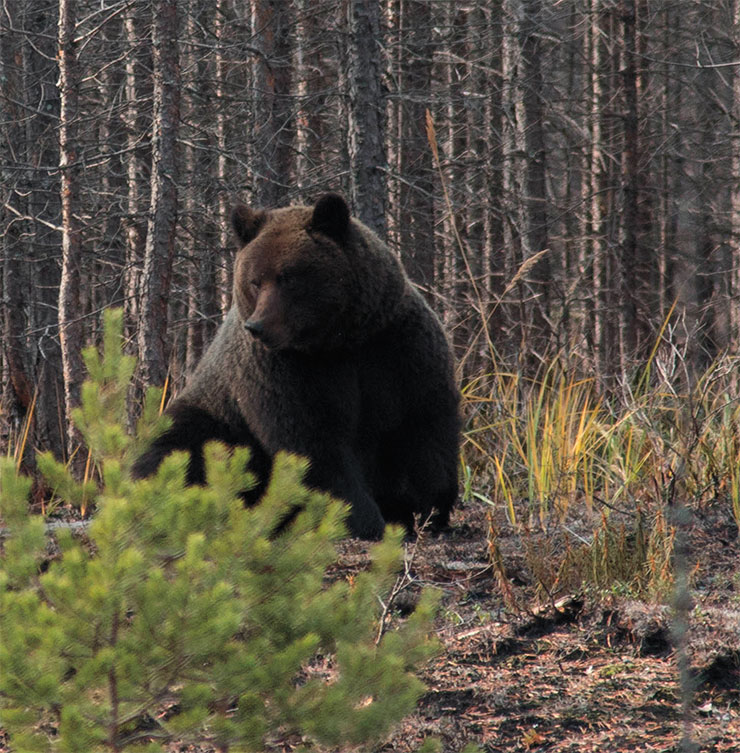
The bear was massive. He was about 150 meters ahead of us. He climbed what used to be a steep bank of an old oxbow lake above the cranberry bog, and stopped.
I reached for my camera with a big lens. We whistled to grab the bear’s attention (on a side note, bears had killed two people in Surgut district in the previous month; they kept appearing near villages, including a bear that was shot after raiding dumpsters for several nights in a row in the middle of the village for a week).
However, our beautiful bear was calm: he did not leave. Instead, he sat down and waited for us to leave demonstratively: he sighed, chewed his claws, and swept gnats off his face. At last, he stood up and started walking towards us slowly. We decided not to try our luck and left. This was not very smart – the bear could cover the distance separating us in a matter of seconds if he wanted»
This land is inseparable from the people who are looking after it. But we are few. The nature reserve never had it easy, and never will, probably. But something is keeping us tied to this work. Let it stay this way…”
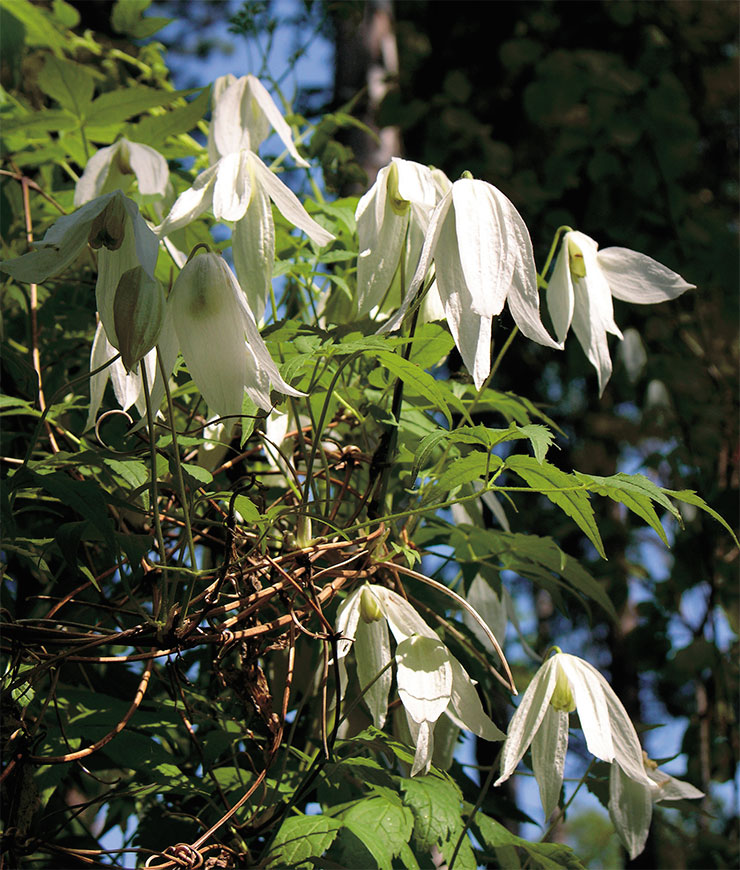
… Right now, in the cold of winter, we do not see as many passerine birds as in the summer. Bramblings, pipits, thrushes, warblers, yellowhammers, chiffchaffs and other little birds arrive in the spring, trying to claim a territory to raise their young. By early fall, they start migrating back south, and in the winter, we see more of our year-round resident species, such as bullfinches, grosbeaks and waxwings.
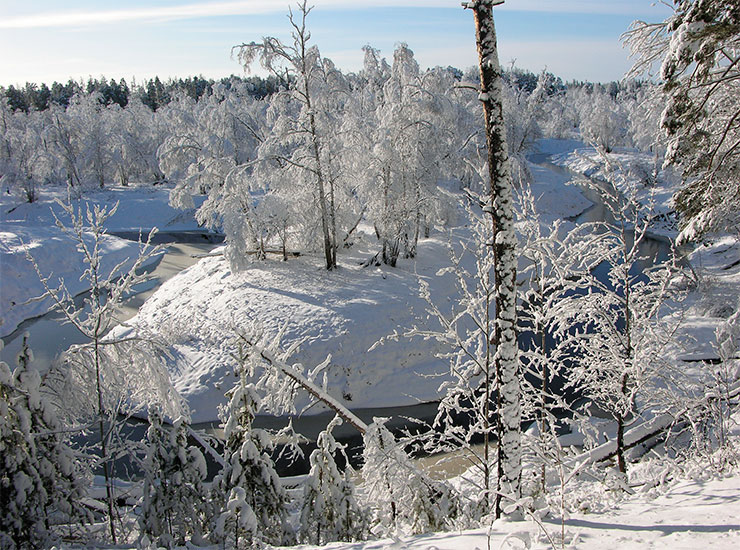
They all know that even our long winter will come to an end, the spring will begin, and the cycle of life will go on.
References
Baikalova A. S., Pereyaslovets V. M., Pereyaslovets T. S. The Yuganskiy nature reserve (photo album). Moscow.: Uniserv, 2001. 151 p. [in Russian].
Pereyaslovets V. M. Bear – the taiga dweller // V mire zhivotnykh. 2016. N 12. P. 40–43. [in Russian].
Pereyaslovets V. M. Tracking A to Z // Uralskiy sledopyt. 2018. N 3. P. 8–11. [in Russian].
Pereyaslovets V. M., Starikov V. P. Food base of the sable of the Yuganskiy nature resever and its long-term dynamics // Ispolzovaniya i okhrana prirodnykh resursov v Rossii. 2016. N3. P. 73–79. [in Russian].


